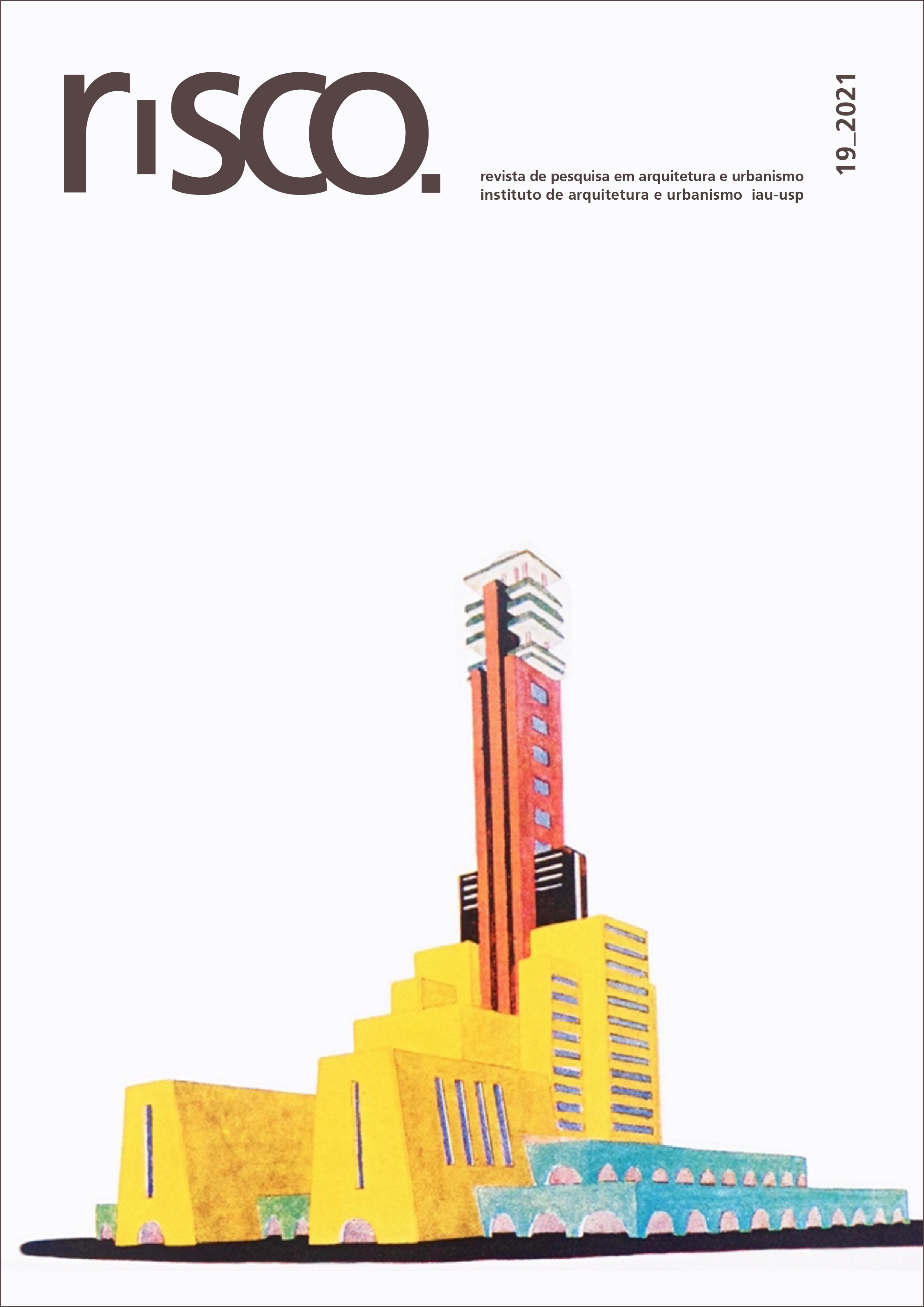The transformation of the landscape into the favela that is subject to land regularization
DOI:
https://doi.org/10.11606/1984-4506.risco.2021.153402Keywords:
Landscape, Shanty town, TransformationAbstract
The work contributes to the debate of the transformation of the landscape in the favela where land regularization takes place. The landscape, as a product and process of occupation of the territory, reveals the social conflicts of space. The transformation of the landscape into the city reveals the profound change in habits and habits in space-time relationships. Politics can contribute to these changes, manifesting themselves in the landscape. In a smaller spectrum, in the favela, when the public politics of land regularization occurs, the landscape reflects this new form of occupation of the territory, transforming itself. The regularized favela is reflected in the changing landscape, the landscape transformed by the process.
Downloads
References
ALFONSIN, Betânia de Moraes. O significado do Estatuto da Cidade para os processos de regularização fundiária no Brasil. In: Ministério das Cidades, Regularização fundiária plena: referenciais conceituais. Brasília: 2007.
ALFONSIN, Betânia de Moraes. Da invisibilidade à regularização fundiária: a trajetória legal da moradia de baixa renda em Porto Alegre - Século XX. (Dissertação - Mestrado em Arquitetura). Porto Alegre: UFRGS, Faculdade de Arquitetura, 2000).
BESSE, Jean-Marc. Ver a terra: seis ensaios sobre a paisagem e a geografia. Trad. Vladimir Bartalini. São Paulo: Perspectiva, 2014.
CARLOS, Ana Fani Alessandri. O espaço urbano: novos escritos sobre a cidade. São Paulo: Contexto, 2004.
CULLEN, Gordon. Paisagem urbana. Lisboa: Edicoes70, 2013.
FERNANDES, Edésio, ALFONSIN, Betânia. A lei e a ilegalidade na produção do espaço urbano. Belo Horizonte: Del Rey, 2003.
MAGALHÃES, Alex Ferreira. O direito das favelas. Rio de Janeiro: Letra Capital, 2013.
NALINI, José Renato, LEVY, Wilson (Coord). Regularização fundiária. 2 ed. rev., atual e ampl. Rio de Janeiro: Forense, 2014.
SANTOS, Milton; SILVEIRA María Laura. O Brasil: território e sociedade no início do século XXI. 11ª ed. Rio de Janeiro: Record, 2008.
SAULE JÚNIOR, Nelson. A proteção jurídica da moradia nos assentamento irregulares. Porto Alegre: Sergio Antonio Fabris Editor, 2004.
SILVA, Jonathas M. P. Premissas e critérios para a transformação da paisagem. In: Eduardo Barra,, Vera Regina Tângari, Mônica Bahia Schlee, Márcia Nogueira Batista. A vegetação nativa no planejamento e no projeto paisagístico. Rio de Janeiro: Riobooks, 2015. p. 53-65.
SOARES, Adriano Santos. A paisagem como objeto de políticas públicas – o caso das favelas cariocas, In: Revista Geonorte, Edição Especial 3, v.7, N.1, p. 15-39, 2013, p 20.
SOUZA E SILVA. Jailson (Org). O que é favela, afinal? Rio de Janeiro: Observatório de Favelas do Rio de Janeiro, 2009.
VILLAÇA, Flávio. Espaço Intra-Urbano no Brasil. Nobel/FAPESP, Lincoln Institute, São Paulo, 1998.
Downloads
Published
Issue
Section
License
Copyright (c) 2021 Taisa Cintra Dosso, Jonathas Magalhães Pereira da Silva

This work is licensed under a Creative Commons Attribution-NonCommercial-ShareAlike 4.0 International License.
Autores que publicam nesta revista concordam com os seguintes termos:
a. Autores mantém os direitos autorais e concedem à revista o direito de primeira publicação, com o trabalho simultaneamente licenciado sob a Licença Creative Commons Attribution BY-NC-SA que permite o compartilhamento do trabalho com reconhecimento da autoria e publicação inicial nesta revista.
b. Autores têm autorização para assumir contratos adicionais separadamente, para distribuição não-exclusiva da versão do trabalho publicada nesta revista (ex.: publicar em repositório institucional ou como capítulo de livro), com reconhecimento de autoria e publicação inicial nesta revista.
c. Autores têm permissão e são estimulados a publicar e distribuir seu trabalho online (ex.: em repositórios institucionais ou na sua página pessoal) a qualquer ponto antes ou durante o processo editorial, já que isso pode gerar alterações produtivas, bem como aumentar o impacto e a citação do trabalho publicado (Veja O Efeito do Acesso Livre).

















